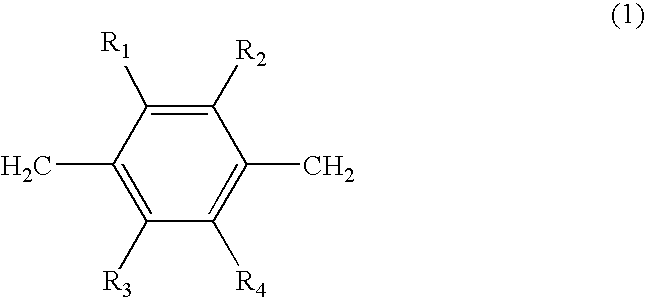Fabrication of surfaces with reduced protein adsorption and/or cell adhesion
a technology of protein adsorption and cell adhesion, applied in the field of biologically resistant surfaces, can solve the problems of high sample volume, high cost and time-consuming processes, and the current microdevice lacks the availability of surfaces compatible with screening methods, and achieves the effect of simple, inexpensive and quick scale-up
- Summary
- Abstract
- Description
- Claims
- Application Information
AI Technical Summary
Benefits of technology
Problems solved by technology
Method used
Image
Examples
Embodiment Construction
[0021] Universal applicability of the CVD polymer to various substrates, such as polymers, metals or composites makes the procedure described below attractive for fabrication of microdevices for parallel analysis of biomolecules. Generally, the polymer films contain functional groups that are capable to reduce adsorption of proteins and / or adhesion of cells. The monomer units may be achieved either by thermal or photochemical activation of suitable precursors (usually paracyclophanes) in a CVD process. All interfaces are based on poly(para-xylylene) polymers, polymer derivatives or copolymers thereof. The interface is built up by polymers that contain one or more different repetition units, where at least one of the repetition units is selected from the class of repetition units with the general structure 1 (as shown below), while other repetition units can be variably designed, although para-xylylene is the mainly suitable other repetition unit.
Rn (n−1,2,3,4) may be equal or dif...
PUM
| Property | Measurement | Unit |
|---|---|---|
| Temperature | aaaaa | aaaaa |
| Temperature | aaaaa | aaaaa |
| Temperature | aaaaa | aaaaa |
Abstract
Description
Claims
Application Information
 Login to View More
Login to View More - R&D
- Intellectual Property
- Life Sciences
- Materials
- Tech Scout
- Unparalleled Data Quality
- Higher Quality Content
- 60% Fewer Hallucinations
Browse by: Latest US Patents, China's latest patents, Technical Efficacy Thesaurus, Application Domain, Technology Topic, Popular Technical Reports.
© 2025 PatSnap. All rights reserved.Legal|Privacy policy|Modern Slavery Act Transparency Statement|Sitemap|About US| Contact US: help@patsnap.com



